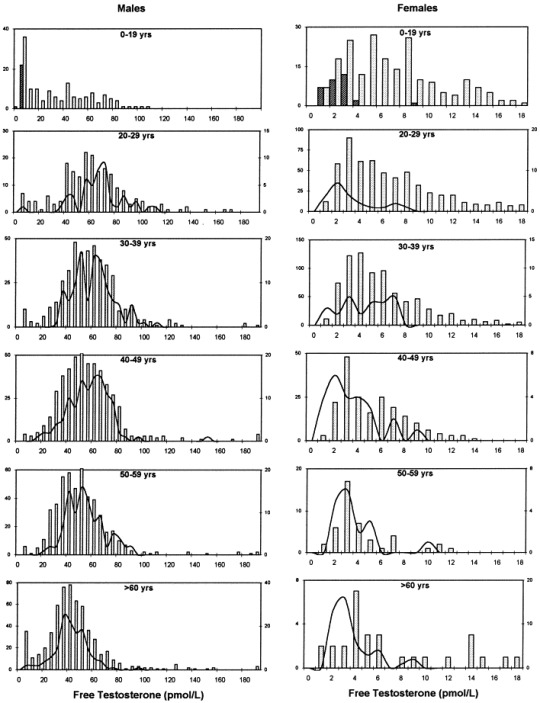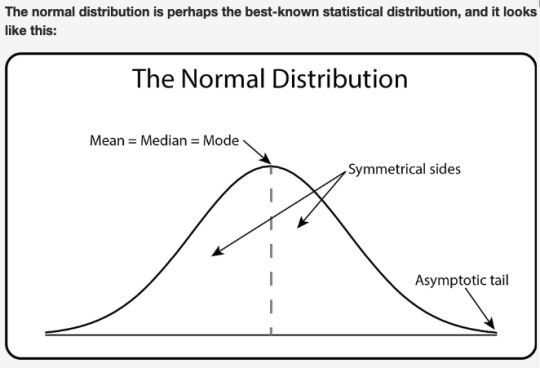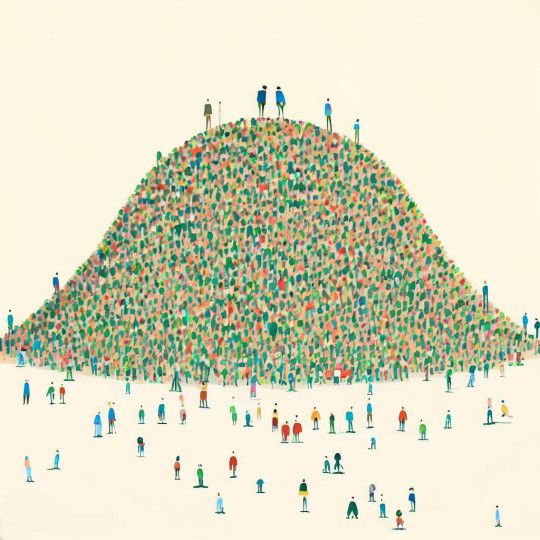#the normal distribution curve isn't as normal as me
Text









Leon Slut Kennedy.
#he has no business being this hot#I'm so so normal about him#absolutely normal#I wake up in the morning and brush my teeth#that's how normal I am#the normal distribution curve isn't as normal as me#my blood pressure is 120/80#it's normal#it's insane how normal I am#I'm a normal person#leon Kennedy#resident evil 4#remake#resident evil#leon scott kennedy
20 notes
·
View notes
Note
I’d love to hear your thoughts on Viz acquiring RWBY.
Apparently this is also how I find out that my computer isn't taking screenshots at the moment, so @hivemind42 I'm tagging you since I can't include your ask here 👍
Yeah, right now I'm feeling... neutral due to lack of information? It's pretty clear to me via the announcement vid that they want to keep the fandom optimistic without outright acknowledging that Viz hasn't committed to anything yet (beyond hosting what already exists of RWBY, that is). There are a lot of exciting words like "production" and RWBY's "future" and continuing the "legacy," but no hard facts like whether we'll get a Volume 10, or whether they'll be new material at all. Admittedly, I'm questioning the likelihood of us seeing more RWBY in its original form because 1. does Viz have any experience with producing animation? (I was under the impression they were manga + anime distribution) and 2. Wouldn't the team have already been informed if a company was willing/able to continue the franchise as published? Meaning, I'd think someone snagging RWBY would have gone into the negotiations with, "Yeah, we absolutely want to produce a Volume 10. That's why we're here" but hell, I don't know enough about the production end of things to say whether this is normal or not.
The actual, factually-based takeaway is that RWBY will continue on in some capacity - the specifics of that are TBA - and fans should be happy that at the very least the franchise will have a permanent home. (Say what you want about RWBY/RT, I don't like any media getting lost to the digital wind.)
The cynical takeaway from my POV is that RWBY's future may only consist of additional manga/more spinoffs of questionable quality.
The really cynical takeaway is that if they attempt a Volume 10 it may be an epic dumpster fire due to the combination of RWBY's current state and a company (I think?) getting their feet wet on this side of the creative line :/
But who knows! I can't say I remain eternally optimistic, but there's been too many curve-balls on my yearly bingos lately for me to completely write off "RWBY gets acquired by Viz, publishes Volume 10, and it's solid addition that nostalgically grabs Clyde by the heartstrings" :D
41 notes
·
View notes
Note
A point a friend on discord made was
People with "mild" variations are often invalidated when they call themselves intersex and attacked, and not all people feel safe saying they are intersex for that reason and end up saying they are perisex. A term between the two would help with the safety of those people who do not feel safe and who are often forced to be put in a position they are not in.
Not all people with mild variations consider themselves intersex. However, they are not considered perisex because they have variations in sex.
Not everyone likes to use intersex. This is because they may find it very medicalizing (and sometimes the person has a variation in visible sex, but does not fit or does not want to see it fit into any medical term) or they may find it not medicalizing at all (some people really have problems with their sexual variation, causing disabilities, for example, and prefer to use more medical terms that define this). So, for those who feel that intersex is too medicalizing a term, you may prefer to use alternative terms
I'm the asker about spectrum and I wanted to let you know these points
Also. When I think about intersex as a spectrum, I meant in the linguistic/conceptual aspect. As like graysexual is in the asexual spectrum.
Myself, my intersex variation isn't studied yet (partial or mild EIS). And mesosex resonates with me. Even though in the end I could go with just being a dyadic ally or questioning/quoisex/extersex. I also feel as if like both the terms perisex and intersex could fit me
Some people also say sex is a statistically bimodal spectrum. What do you think about it?
Thanks for sharing! I'm glad the term mesosex resonates with you 😄 It's honestly really useful to hear from people who feel the term mesosex resonates with them. I put the word out there because I had a sense there's a demand but as somebody who feels solidly intersex I feel honestly weird having a say in a label I don't myself use.
If you didn't see it already, a mesosex person chimed into the original thread.
To me intersex is the anti-medicalizing term, especially in contrast to DSD, which to me is 100% medicalized. But that's just me!
Analogies about Biological Sex
So you also asked about my thoughts on sex as a "statistically bimodal spectrum", and the short answer is I think the term bimodal is misleading and possibly circular, and there are better analogies out there.
I already agree with what others have pointed out about sex not being a spectrum - a spectrum has one dimension (a line), and sex has dozens of dimensions (chromosomes, hormones, etc). Out of the analogies I've seen, I like most Hans Lindahl's train tracks analogy for sex development.
But I'm gonna guess that by "sex as a statistically bimodal spectrum" you mean "sex as a statistically probability distribution/density" and take this as something distinct from the sex-as-spectrum model.
As it turns out, I have a lot to say about "bimodal"
In my experience, people tend to have huge misconceptions about what statistically bimodal means. It understandably gets conflated a lot with the idea that there are two separate populations.
So let's think about height. People will say things like "height is bimodal" because they're conditioned to think that men and women are separate, and the average man is taller than the average woman.
And when they say things like "height is bimodal" they think the distribution for adults will look like this:

But here's what the adult human height distribution looks like:

The thing about normal/Gaussian distributions is that adding them together is tends to result in something that also looks normal/Gaussian.
If we look back at pink and blue distributions I hand drew, there's a visual sleight of hand going on there. Where the area under the curve is pink or blue, we can think of one pixel as representing one human in the data set. But in the part where they overlap, it's not one pixel per human, its one pixel for two humans - one from the womens' data set, one from the men's data set.
The result is that the size of the overlap looks half as small as it should be. It leads people to mistakenly think there is less overlap between men and women than there actually is.
So if we actually take that overlap and show how the distributions add together, we get something that immediately stops looking so "bimodal":

With the two probability distributions that I drew there might be a small dip in the middle, but it would be quite small. 🙃
Two probability distributions need to be really far apart for them to produce something that actually looks bimodal. (Specifically, the difference between the means needs to be smaller than twice the standard deviation - details here.)
True bimodal distributions are rare. They do exist in nature. But most of the time when people see a probability distribution with two peaks, it is a result of misleading visuals, noisy data, or poorly-binned histograms. 👀
In grad school I was taught that bimodality is a sign your data is suspicious: "Statisticians are trained to be suspicious of distributions with multiple modes. Such distributions usually indicate inhomogeneity in the system, or, in plainer language, different causes for the different modes. All familiar proverbs about the inadvisibility of mixing apples and oranges apply." (Gould, 1981)
In particular, the misinterpretation of (apparently) bimodal data has been used to confirm eugenicist ideas about racial differences, because when it comes to statistics we're always a step or two away from having to grapple with the legacy of eugenics. ⚠️
So let's get back the original question about seeing sex as statistically bimodal. The average person understands bimodal to mean "two populations", not statistical bimodality.
So before I even get into what sex even is, right off the bat this analogy is dangerously circular: sex is what it is because it's two separate populations.
Sex in humans is determined by a whole bunch of things that tend to correlate with each other (chromosomes, SRY gene, androgen levels, androgen sensitivity, estrogen levels, estrogen sensitivity, etc), so I can see the desire to illustrate that some things co-occur together more than others!
But I agree with @queercripintersex in the discussion of your previous ask that trying to project the multiple dimensions of sex into one dimension loses too much information, and is difficult to even do because so many factors are non-continuous (chromosomes, etc).
For the continuous variables, you can in theory try to find out if they have bimodal probability distributions. But quite rapidly run into issues of poor data. The data on testosterone levels in women is shockingly insufficient. Like I went looking for distributions of free testosterone levels and just look at how much noisier and sparse the data is for women (on the left) compared to men (on the right):

Source: Ooi et al, 1198
Even with all the noise in the data it's still unlikely that at any of the age categories, that the men's data and women's data added together would produce bimodal distributions. There's too much overlap.
As a general rule of thumb, any given physical difference (hormones, measurements, etc) has more variation within the sexes than between them.
Our culture has vastly overestimated the biological differences between the sexes. 😫 So I worry that adopting a sex-as-bimodal-distributions analogy will only feed this misconception. 🫤 I'm personally going to avoid using the analogy.
#sorry this is so long#but you asked an academic so this is what you get haha#eugenics: it's always there#biology of sex#biology education#science education#statistics education#text#intersex#mesosex#actuallyintersex#actually intersex
34 notes
·
View notes
Text
the agony i am in right now trying to figure out what a distribution is.
websites are out here straight up LYING to me Manipulating me to believe their little scheming dirty trick that the normal distribution looks like a bell curve


im fucking onto you
if that's what a normal distribution looks like.... it's kind of funny? isn't it. i just think it's kind of funny how poisson and binomal distributions look like THIS

when displayed with a probability density function. but if pdf(x) is The Bell Curve Function then what the FUCK is a normal distribution please don't look away the cops are after me theyre going to shut off my internet i need hel-
#math#statistics#education#research#please help me#i do think it has to do with them having different properties when displayed like iget that poisson is usually more right skewed but Still#doesnt it have more to do witht he tpes of variables? and if so how did they come up with the equations for the distributions?#im just mad#i feel lied to#this is a huge betrayal
22 notes
·
View notes
Text
Outrageously Normal

What is normal? And what is outrageous?
What do we really mean by deviance?
Does wanting someone to spank you bottom until it’s pink and sore make you deviant, or excitingly adventurous and alluring? To a mathematician deviance is an objective measure, not a moral judgement, representing how different a particular characteristic is from the average of every known occurrence.
If you were the only individual in the whole world who craved a smacked bottom, it might indeed seem rather weird to anyone you confessed your secret. Yet what we call deviance is really a degree of novelty, the likelihood of anyone encountering it before. Every subsequent time you discover someone who also likes smacked bottoms, the less weird and deviant your interest seems.
Previously, I’ve talked about why it’s important to be erotically curious, to actively explore our own fantasies, and ask questions about what turns us on. But it's also useful to be aware that we seek answers at two different levels of our minds, a higher rational level, and a lower more fundamental emotional one.
Typically when we ask our rational minds a question, we receive an answer through our inner voice in the form of words and ideas. But if we ask our rational mind an emotional question, sometimes we'll receive an answer in the form of awkward feelings that doesn't seem to make any sense at all.
When we need to query the more primal parts of our mind, about base needs like drive, desire, and sex - we receive answers in the form of emotions rather than words, which then need be interpreted. Everyone is familiar with that kind of introspection whenever we ask ourselves: how does this situation make me feel?
It can be difficult to understand our true feelings about important matters. Fishing our true stories and concerns from our unconscious minds is a skill in itself that can take a lifetime to master. It turns out wisdom isn't a knowledge of facts, it's an awareness and understanding of our feelings.
So many of our questions about sex are really requests for reassurance, hoping to know whether what we're doing is right or wrong. Whether we're normal or weird.
What our rational mind knows is the result of years of assimilating the average opinions of a staid and risk-averse culture. So if we ask our rational mind a primal question, the chances are we'll feel we're doing something quite outrageous. Daring to break the mundane conventions we've been taught to obey can often make us feel rather ashamed.
That's why it's so important to encounter transgressive points of view. We need to hear others talking about how they pleasure themselves, how they express their sexuality, and the fetishes they're no longer embarrassed about. That's why I'm always so thrilled when readers choose to share their fantasies with me.
Decorum prevents us from surveying strangers on the street for the details of their deepest desires. Fortunately erotic content, such as blogs and stories, helps to show us just how huge the spectrum of human sexuality really is, allowing us to develop an informed picture of what really turns others on.
Human sexuality is a bell curve, just like most collections of characteristics are. In these kind of "normal" distributions the horizontal axis reflects how far something is from the average, whilst the vertical axis depicts its frequency, like how many people in a given population are into some sexual activity, for instance. Hence the most popular activities form a big bulge in the middle, with the less common ones becoming the outliers at the edges.
There are two lessons to take away from this: frequency isn't a measure of acceptability, and deviation from the average isn't either. It's perfectly acceptable to have tastes that aren't shared by many others, or to lie far from the mainstream, whether it's music, literature, fashion, or anything other aspect of life. In fact, it's essential for our cultural diversity, otherwise our society would be very boring indeed.
As the online realm becomes ever more prudish, having permissive places to post is increasingly vital. Our culture needs platforms were adults can talk about adult things. We all need reassurance we're not as deviant as we fear we are.
This blog exists because sex-positivity matters. It is important we encounter experiences outside the norm, even if it's only to read about them. Such exposure gives us courage to step outside the boundaries of being 'proper', and permission to express our own individuality. We all have the right to be adventurous, even to be outrageous, and choose our own favourite flavours of joy.
9 notes
·
View notes
Note
well my part time summer job has decided to cut my tips. ig the honeymoon period is over. I work at a takeout/fish store and while I get paid an hourly wage, I earn most of my money through tips, and it makes my wage 20-25$ an hour. For the first few weeks I worked there, the tips were pooled and then distributed based on hours. I was pretty happy, I liked the job and my coworkers, there's a bit of a learning curve but I'm a good worker and quick learner. Well ig my coworkers complained or something and now they've decided to do pool tips differently. Instead of dividing the tips equally from hours worked, it's now a point system and one of my shifts is worth almost half one of my more experienced coworkers tips. If I work one double I'd get as much in tips as if they worked one shift. Look, I get that they're experienced, good at their jobs, and do a bit more than I (simply bc I don't know that there are some things I should be doing), but they already get more money than I do in base pay. I work really hard too, and do everything that I've been taught so far which is like 95% of what they do! Idk if this is normal but this feels really shitty to me. If the bosses want to reward them for being dedicated and good at their job, I feel like that should reflect in their base pay and not take money away from me. I'm interacting with the customers as much as they do (even moreso now that I'm being forced into a position at the job I don't really like), and since it's the customers giving tips I just feel like this isn't fair. There's plenty of other jobs around me willing to tip me normally. I'm gonna drop my hours to 2 days a week and if it totals to less than 20$ an hour I'm quitting. I can get that elsewhere.
81 notes
·
View notes
Text
Sexuality, 4/4; Questioning Conjecture
Nsfw
I say straight-ish poly, but I'm pretty sure hitting on a guy qualifies me for bi-curious. While some 'experimentation' might be useful for ironing things out I feel like I'm lacking the vocabulary for describing sexuality, (as such I've been reading a queer dictionary alphabetically, I made it to 'f'). My queer friends are lovely & aren't suggesting/imposing any labels & are trying to give me resources to explore (one said 'try using tumbler' so here I am). I don't know if J*** was an anomaly (since that night was right at the end of me dating I haven't really been partying or looking for partners) & I am admittedly intimidated by the thought of watching gay porn to see if it's appealing, also, I have my doubts that exploring sexuality through porn is the best idea to begin with so I'm avoiding that for now & just letting life happen & not jumping into calling myself Bi or bi-curious. Further, regarding the vocabulary, I've yet to find something that I feel captures the spectrum of non-binary presentation I find attractive which feels left out by 'straight' & 'bi' but 'straight-ish' is open to that interpretation.
Idk if anyone else thinks of it this way, but let's think of gender as a spectrum & then apply normal distributions (bell curves) to the populations Male-Blue, Female-Pink, & non-binary identities-green (or could be a far less normal distribution like the orange line. If I take my attraction to be irrespective of gender identity & just be "left or right of this red line" then it would make sense why I'm attracted to most women, effeminate presenting non-binaries, & some guys. Idk, maybe it shows off what a geeky science background I have that I have a graph & hypothesis to wheel out for my confused sexuality.

In the end, I'm not straight & it's not urgent I figure this out, while my partner isn't thrilled to hear my theories involving J*** this isn't a spot of drama, she's not straight either & all my gay friends are probably chanting "one of us" whenever I tell them my latest sexuality hypothesis.
**edit: I'm very attracted to angular facial features, all my ex's, most my crushes, & J*** have angular faces with gorgeous cheekbone angles ( J*** is actually much less feminine than I or my friends would have thought I'd be into) I think the face shape thing of mine is the correlating variable here. I factor this into my consideration of why I may be attracted to more genders but why it doesn't feel as different as one may expect
1 note
·
View note
Text
This pizza CEO has a crazy plan to create a Bitcoin-like currency to share the wealth with workers
The main way that Silicon Valley companies keep employees loyal is with stock options. Stick around for a year or two, and you get a small slice of ownership in the company. It's a good incentive for workers to do their bit to increase the company's value.
It doesn't really work that way in most other jobs though, especially if you're not an office worker. No matter how many burgers you flip or skim-milk lattes you serve up, you won't own any of the company. And when employees aren't sharing in any of the value they create for a company, morale suffers and turnover increases.
Now, Evan Kuo, the CEO of San Francisco venture-backed pizza-on-demand startup Pythagoras Pizza, thinks he has a clever plan to bridge those two worlds.
Kuo wants to create a new digital currency, to be called "fragments," that would give workers a piece of the pie. The new currency would be sort of like Bitcoin, except that it would be linked to the valuation of Pythagoras Pizza itself.
If this plan works, Pythagoras drivers will earn some fragments every time they deliver a pie. Every order that a Pythagoras chef cooks up also generates fragments. Even Pythagoras customers will be able to get in on the action, with every friend referral resulting in a bounty of fragments.
The better Pythagoras' business performs, the more each fragment will be worth. It means that whether you work for Pythagoras for two weeks or two years, you're earning some kind of stake in the company's future performance, commensurate with your contribution.
In the "gig economy," where independent contractors bounce between organizations on a job-by-job basis, Kuo's plan could create a framework to align workers' interests with those of the platforms they serve. Kuo goes so far as to liken it to the American Dream. Or at least, he says it could prove to the world that cryptocurrencies like Bitcoin have more to offer the world than just a never-ending debate on whether or not there's a bubble.
Pizza miners
Like Ethereum, Bitcoin Cash, or any of the other digital currencies inspired by the rise of Bitcoin, Kuo's "fragments" would be created and distributed using blockchain technology. Anyone can create their own digital currency based on blockchain; the blockchain provides a decentralized database that keeps track of the currency.
The trick is creating a currency that has a value.
Kuo plans to give the fragments a base value by pre-selling tokens to select, US-based investors. Those tokens' value will then be tied to the pizza business' monthly revenue. The better the business does, the higher the value of each fragment.
You can read Kuo's in-depth proposal for fragments here.
Technically, what Kuo is proposing is a novel way to "mine" cryptocurrency — the term for adding more currency to the total pool of currency available. In Bitcoin, mining is accomplished by having supercomputers solve ever-more-complex math problems. With Pythagoras Pizza, you're mining a new fragment every time you put a pizza in the oven.
This isn't quite the same as equity: Fragments won't equate to any kind of ownership in the company, and wouldn't give you any voice in corporate matters. But Kuo sees it as a way for workers, even part-time workers and seasonal employees, to profit from the value they create for Pythagoras.
Right now, this is all theoretical. And there are a lot of big ifs.
For one thing, digital currency is currently under the regulatory microscope. This year has seen a glut of "initial coin offerings," or "ICOs," where companies will issue a new digital currency, sell it to credulous strangers to finance what they promise is a game-changing new product, and then often vanish with the money. Kuo says that he's working with lawyers and other experts to make sure that Pythagoras is on the up-and-up from the jump.
"The expectation is that with the right up-front work, we can get to a top level of compliance," says Kuo.
Fresh from the oven
Kuo, who graduated from Berkeley with a robotics degree in 2006, founded Pythagoras in 2015 after a stint working at Yahoo and experience launching various startups.
He says that Pythagoras is enjoying 48% margins on an average order size of $35 and steadily expanding its operations across San Francisco. Pythagoras already has funding from prominent Silicon Valley firms like Social Capital and Slow Ventures.
However, Kuo says, the company's growth curve looks more like a "mom and pop shop" or a local San Franciscan restaurant, not a "sexy, hot, on-demand startup," says Kuo.
"It's become a normal business," laments Kuo.
With fragments as an incentive, he foresees Pythagoras attracting (and keeping) more employees, improving service and attracting more customers.
Then, says Kuo, the goal is to "get the city of San Francisco mining fragments."
SEE ALSO: Apple just convinced me to stay with iPhone and not ditch for Android
Join the conversation about this story »
NOW WATCH: Shiller says bitcoin is the best example of a bubble in the market today
0 notes